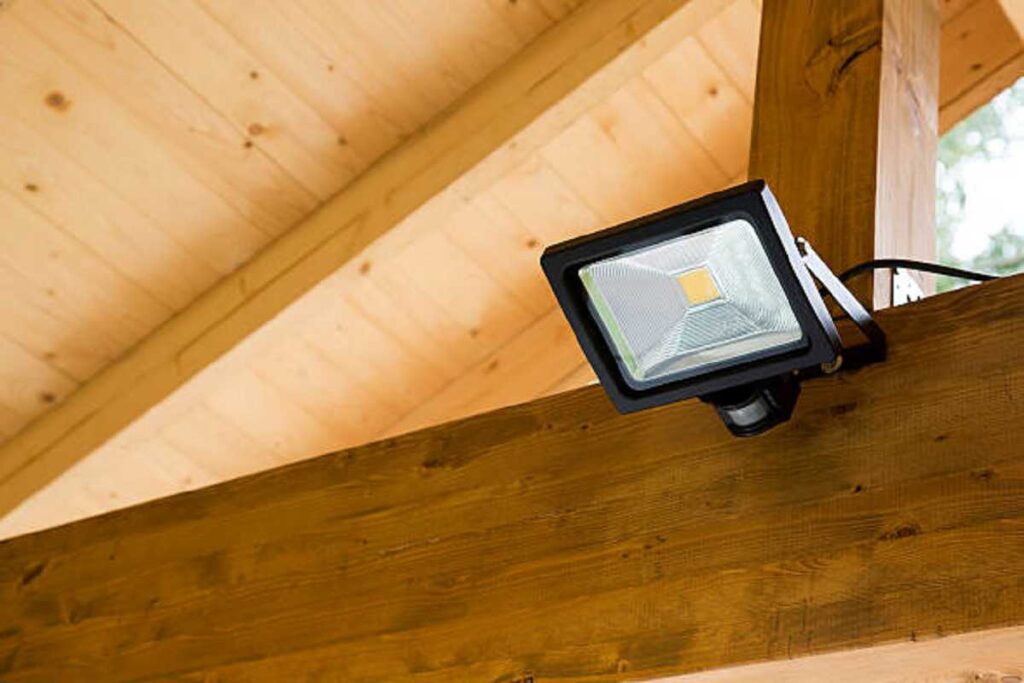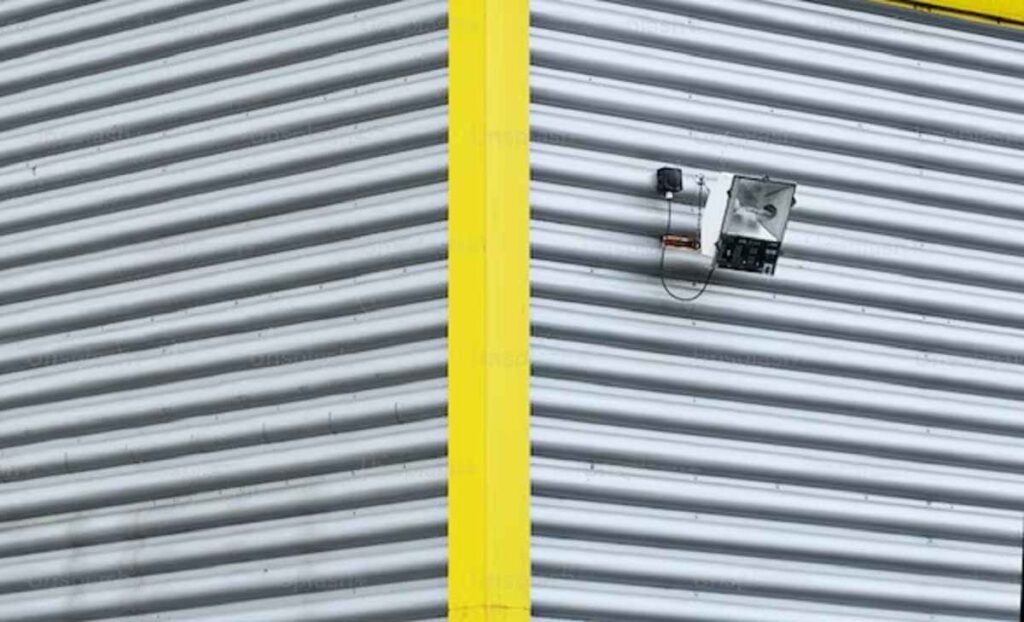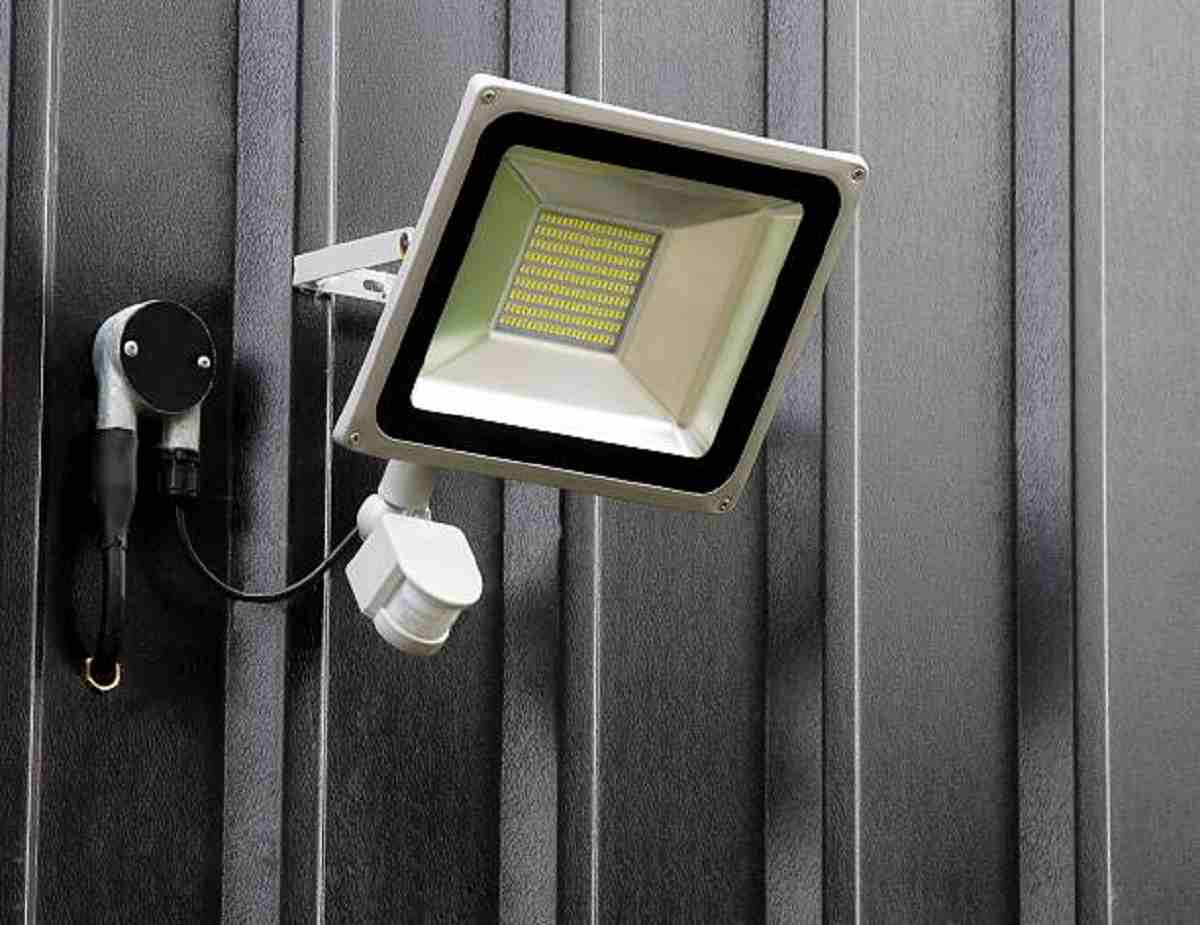In today’s fast-paced world, ensuring the safety of your home has never been more critical. One effective way to enhance security is by installing security lights and motion sensors. In this comprehensive guide, we will delve into the world of outdoor security lights with sensor and motion sensor lights. We’ll explore their benefits, how they work, and why they’re worth considering for your home. Let’s brighten the path to a safer and more secure home.
Table of contents
Why Security Lights Matter
Security lights are essential for enhancing safety and deterring potential threats. They serve as a vital component of home and property security systems by illuminating dark areas, discouraging trespassers, and enabling surveillance cameras to capture clear footage. Beyond protecting against criminal activity, security lights also contribute to personal safety, helping to prevent accidents and provide a sense of security at night, making them an important investment in safeguarding both property and well-being.
Illuminating Safety
“Illuminating Safety” refers to the crucial role that security lights play in providing visibility and deterring potential threats. These lights illuminate the surroundings, making your property less inviting to intruders, and ultimately enhancing the safety of your home.
Understanding Sensors
Sensors are devices that detect and measure physical properties like temperature, light, pressure, or motion, and convert this data into electrical signals for analysis or control. They play a crucial role in various applications, from monitoring environmental conditions to enabling the functioning of everyday gadgets, by providing real-time information to make informed decisions and automate processes.
The Heart of outdoor security lights with sensor
The heart of outdoor security lights with sensor lies in their ability to instantly illuminate and safeguard areas, making them a pivotal element in home and property protection. These lights serve as a proactive deterrent against potential threats, discouraging unwanted intruders and enabling surveillance systems to function effectively. In emergencies, they provide critical visibility, aiding in swift responses to potential dangers. Ultimately, security lights are the central core of an effective security strategy, enhancing both physical safety and peace of mind, especially during nighttime hours.
Types of Sensors
There is a wide variety of sensor types, each designed to detect specific physical properties or environmental conditions. Some common types of sensors include temperature sensors (thermometers), light sensors (photodetectors), pressure sensors, motion sensors (motion detectors), proximity sensors, humidity sensors, gas sensors (carbon monoxide detectors), and touch sensors. These sensors are used in a myriad of applications, from climate control in buildings to automotive safety systems, and they play a critical role in collecting data for monitoring and automation purposes.
Motion Sensor Lights
Motion sensor lights are lighting fixtures equipped with motion sensors that can detect movement in their vicinity. When motion is detected, these lights automatically switch on, providing illumination for a specified duration and then turning off when there is no further motion. They are commonly used in outdoor and security lighting to enhance safety and conserve energy. Motion sensor lights offer benefits like added security by deterring potential intruders, convenience for homeowners who don’t need to manually operate the lights, and energy efficiency by ensuring the lights are only active when needed, making them a popular choice for both residential and commercial applications.
Installing Security Lights
Installing security lights involves several key steps. First, choose the appropriate location for the lights, ensuring they cover critical areas like entry points and dark corners. Next, install the mounting hardware securely, followed by positioning and mounting the light fixtures. Ensure proper wiring, either by connecting to existing electrical systems or using solar-powered options. Configure the motion sensor settings as needed, adjusting sensitivity and activation time. Finally, conduct thorough testing to ensure the lights activate when motion is detected. Proper installation of security lights enhances the safety and security of your property, making it an effective deterrent against intruders and a valuable addition to your overall security strategy. If you are unsure about electrical work, it’s advisable to seek professional assistance.

The Installation Process
Installing security lights is a manageable DIY project. We’ll guide you through the installation process, ensuring your lights are set up correctly.
The installation process for security lights typically involves the following steps:
- Location Selection: Choose strategic locations for the lights, focusing on areas where enhanced visibility and security are needed, such as entrances, pathways, or dark corners.
- Mounting Hardware: Install the mounting hardware securely. This may include brackets, screws, or anchors, depending on the type of surface (e.g., walls, ceilings, or posts).
- Light Fixture Mounting: Position the light fixtures on the mounting hardware and secure them in place. Follow the manufacturer’s instructions for the specific fixture model.
- Wiring: Connect the lights to an electrical power source. This can involve running wires to an existing electrical circuit or using solar-powered options, depending on the type of security lights.
- Motion Sensor Configuration: Adjust the motion sensor settings to suit your preferences. You can set the sensitivity, range, and duration for which the lights remain on when motion is detected.
- Testing: Test the security lights to ensure they activate correctly when motion is detected. Walk around the detection area to verify the sensor’s responsiveness.
- Final Adjustments: Make any necessary final adjustments to the positioning, sensitivity, or other settings based on the test results.
Choosing the Right Location
Selecting the optimal spots for your outdoor security lights with sensors is crucial. We’ll provide tips on where to install them for maximum effectiveness.
- Entry Points: Focus on areas where intruders might attempt to enter, such as doorways, windows, and gates. Placing lights near these points provides visibility and deters unauthorized access.
- Dark Areas: Identify spots on your property that are typically poorly lit, as these are prime targets for potential intruders. Installing lights in dark corners or pathways helps eliminate hiding spots.
- High-Traffic Areas: Illuminate high-traffic areas to ensure the safety of residents and visitors. Well-lit pathways and driveways prevent accidents and improve visibility.
- Proximity to Motion Sensors: Ensure that the chosen location allows the motion sensors to detect movement effectively. Adjust the sensor’s range and angle to cover the desired area.
- Avoid Glare and Shadows: Position the lights to avoid glare or casting long shadows, as this can hinder visibility and create blind spots.
- Consider Aesthetics: While security is a priority, consider the aesthetics of your property. Choose fixtures and positions that blend with your landscape and architectural design.
- Power Source: Check the proximity to an electrical power source for wired lights or the availability of sunlight for solar-powered options.
- Local Regulations: Be aware of any local regulations or guidelines regarding outdoor lighting, which may dictate the type and positioning of security lights.
Advantages of Motion Sensor Lights
- Enhanced Security: They automatically illuminate when motion is detected, deterring potential intruders and making your property less attractive to burglars.
- Convenience: Motion sensor lights eliminate the need to manually turn lights on and off, providing convenient and hands-free illumination as you move around.
- Energy Efficiency: They reduce energy consumption because they only activate when needed, preventing lights from being left on unnecessarily and lowering electricity bills.
- Longer Bulb Life: With less frequent use, bulbs in motion sensor lights tend to last longer, reducing the frequency of replacements.
- Safety: They improve safety by illuminating pathways, stairs, and other areas, reducing the risk of accidents due to poor visibility.
- Customizable Settings: Many motion sensor lights allow you to adjust sensitivity, activation time, and detection range to suit your specific needs.
- Environmental Impact: Reduced energy consumption and longer bulb life contribute to a smaller carbon footprint, making them an eco-friendly choice.
- Versatility: Motion sensor lights come in various styles and can be used both indoors and outdoors for different applications, from security to convenience.
- Remote Monitoring: Some models are compatible with smart home systems, allowing you to monitor and control them remotely via a smartphone or other devices.
Cost and Energy Efficiency
Cost and energy efficiency go hand in hand as crucial considerations in various aspects of modern living. By investing in energy-efficient appliances, lighting, and insulation, individuals and businesses can not only reduce their environmental footprint but also enjoy long-term cost savings through lower energy bills. These efforts contribute to a more sustainable and economically prudent lifestyle, promoting responsible resource use and mitigating the impacts of climate change.
Versatility and Convenience
Motion sensor lights provide versatility and convenience by automatically activating when motion is detected, making them ideal for a wide range of applications. Whether enhancing security outdoors, illuminating dark corners, or adding hands-free lighting to indoor spaces, they offer a practical solution that adapts to various needs. Their ability to conserve energy and extend bulb life further contributes to the convenience of hassle-free, efficient illumination, making them a valuable choice for both residential and commercial settings.
Motion Sensor Lights for Outdoor Security
Motion sensor lights for outdoor security are a crucial component of a robust security system. These lights automatically switch on when they detect movement, illuminating the surroundings and acting as a deterrent against potential intruders. They play a vital role in enhancing the safety of your property by preventing unauthorized access, discouraging criminal activity, and providing clear visibility during nighttime hours. Motion sensor lights are highly effective in safeguarding entry points, pathways, and dark areas around your home, making them an essential addition to any outdoor security strategy.
Comprehensive Outdoor Security
Comprehensive outdoor security involves a multifaceted approach to protecting your property. This includes measures such as strategically placed motion outdoor security lights with sensor to deter intruders, sturdy locks and secure entry points, surveillance cameras for real-time monitoring, and landscaping design that minimizes potential hiding spots. Additionally, it encompasses alarm systems, fencing, and access control methods, all working together to create a safe and well-illuminated environment that not only safeguards against threats but also enhances the overall safety and peace of mind of those residing within the property.
Features to Look for
When shopping for outdoor security lights, consider features like IP65 ratings, LED technology, and solar power options. We’ll break down these features to help you make an informed choice.
Safety with a High-Tech Twist
“Safety with a High-Tech Twist” embodies the integration of cutting-edge technology into safety measures, spanning personal, workplace, and community security. This fusion leverages advancements in smart home security, wearable devices, autonomous vehicles, industrial automation, and more to enhance safety, offering proactive, efficient, and data-driven solutions to mitigate risks and protect individuals and assets while, simultaneously, addressing concerns about privacy and ethical considerations in the digital age.
Smart Security Lights
Smart security lights are innovative lighting solutions equipped with advanced technology, such as motion sensors, Wi-Fi connectivity, and smartphone control. These lights automatically detect motion and can be programmed to respond in various ways, such as illuminating an area, sending alerts to homeowners’ smartphones, or integrating with other smart home devices. They provide an enhanced level of safety and convenience, allowing homeowners to remotely monitor and control their outdoor lighting, which can deter intruders and provide peace of mind while simultaneously saving energy and reducing electricity costs.
Built-In Cameras
Built-in cameras refer to integrated camera systems within devices, appliances, or structures. These cameras are designed to capture images or videos for various purposes, such as security, surveillance, communication, or documentation. They can be found in smartphones, laptops, smart home devices, and even public infrastructure like traffic lights or ATMs. Built-in cameras offer the convenience of readily available imaging capabilities, allowing users to capture moments, engage in video calls, monitor their property, or enhance security. However, their use also raises concerns about privacy and data security, which necessitates responsible and ethical handling of the captured information.

The Importance of Visibility
Visibility is of paramount importance in numerous aspects of life. Whether in business, safety, relationships, or personal growth, having a clear and transparent view of the situation is essential. In business, visibility into data and processes empowers informed decision-making and improved efficiency. In safety, visibility means being aware of potential risks and hazards to mitigate them effectively. In relationships, open communication and emotional transparency foster understanding and trust. For personal growth, self-awareness and insight into one’s strengths and weaknesses are pivotal. Ultimately, visibility serves as the foundation for progress, security, and success in all areas of life.
Enhancing Safety with Brightness
We’ll explain how a well-lit outdoor space can enhance the safety and visibility around your home, making it less attractive to potential intruders.
A Range of Options
Security lights are available in a wide range of styles and designs, ensuring there’s something to suit every home. We’ll guide you through the options available.
Conclusion
In conclusion, security lights and motion sensors are excellent investments for your home’s safety. By deterring intruders and providing illumination, they offer peace of mind and a sense of security. The range of options, from basic security lights to high-tech smart solutions, means there’s something to suit every homeowner’s needs. Your home can be well-lit and protected, giving you peace of mind whether you’re at home or away.
FAQs
While motion sensors are common, there are also outdoor security lights with light sensors (dusk-to-dawn sensors) that automatically turn on at night and off during the day. Some lights may combine both motion and light sensors.
The range can vary, but it’s often between 10 to 30 feet, depending on the model. Some lights allow you to adjust the range to suit your specific needs.
Yes, sensor lights can be used indoors as well, such as in closets, basements, or rooms where automatic lighting is desired.
Yes, sensor lights are available with various bulb options, including LED, incandescent, and fluorescent bulbs. LED bulbs are popular due to their energy efficiency and long lifespan.
To reduce false alarms, ensure the sensor is positioned away from objects like trees, shrubs, or objects that might move in the wind. Adjust the sensitivity settings as needed.
